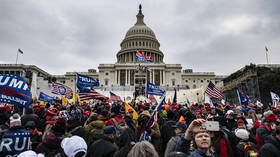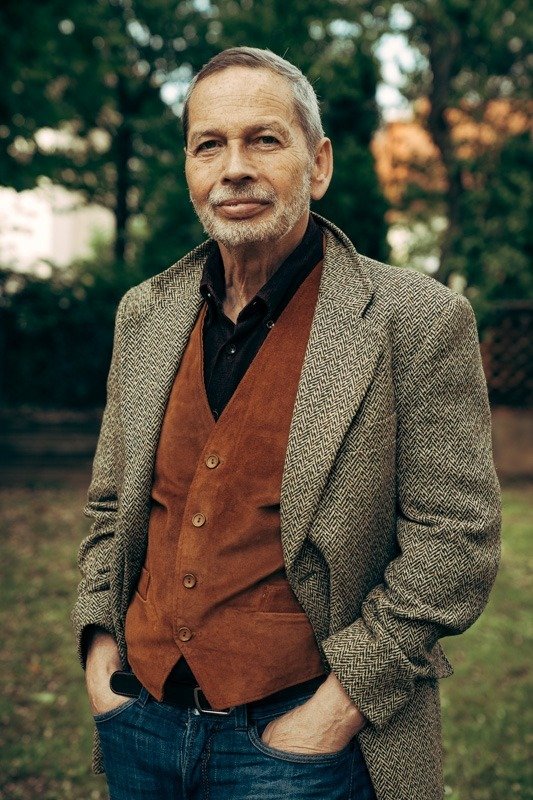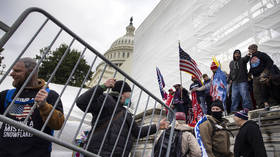The sinister legacy of January 6

Almost one year on from the riot at the US Capitol Building, it continues to be used by those in positions of power to develop a culture of fear – yet another example of a threat being amplified and raising public insecurity.
There is no need for a pandemic for the hysterical ruling class to constantly turn on the engine of fear. Without blinking an eye, the American political establishment has casually catastrophised the Capitol protest in Washington on 6 January last year.
Almost immediately a political riot by angry protestors was reframed as an “insurrection” and an act of domestic terror. Leading Democratic Party figures even sought to link the so-called coup attempt to Russia, and House Speaker Nancy Pelosi declared that the rioters were “Putin’s puppets”.
Despite the relentless quest to uncover a malevolent conspiracy to overthrow the elected government of the United States, there is nothing to suggest that what occurred on January 6 was anything more than an instance of angry, violent rioters invading the Capitol Building. Despite their best efforts, the FBI and other agencies could find no proof of any conspiracy. Last August, Reuters reported that “the FBI has found scant evidence that the January 6 attack on the US Capitol was the result of an organized plot to overturn the presidential election result”.
This absence of evidence notwithstanding, America’s cultural elite, along with the leadership of the Democratic Party, continues to remain in hysteria mode. Indeed, its obsession with the threat of an insurrection or a coup has hardened during the past year to the point that it genuinely finds it difficult to distinguish between fantasy and reality.
The New York Times, once a serious news outlet, has become a slave of its paranoia about an impending civil war. Anyone reading its commentary would draw the conclusion that what happened on January 6 was akin to the violent rioting that accompanies a bloody coup d’etat.
On the first day of 2022, its Editorial Board published a piece titled “Every Day Is Jan. 6 Now”. In case anyone failed to get the point of the title, it added, “Jan. 6 is not in the past; it is every day”. The statement evokes a world where the American “Republic faces an existential threat” and insists that “we should stop underestimating the threat facing the country”. The threat it refers to constitutes the millions of voters who continue to support Donald Trump and deny the New York Times’ version of reality. In its typical alarmist tone, it states, “no self-governing society can survive such a threat by denying it exists”.
This feverish irrationality isn’t restricted to America. Across the Atlantic, The Guardian adopts a similar tone in its treatment of the legacy of January 6. “US could be under rightwing dictator by 2030, Canadian warns” runs one of its headlines. In this article, the scaremongering prediction of an academic in The Globe and Mail is presented as a sensible assessment of future possibilities. Political science professor Thomas Homer-Dixon from Royal Roads University in British Columbia urges Canada to protect itself against the “collapse of American democracy”. And he warns, “We mustn’t dismiss these possibilities just because they seem ludicrous or too horrible to imagine.”
Projecting a scene akin to one in a dystopian horror film, Homer-Dixon asserts, “By 2025, American democracy could collapse, causing extreme domestic political instability, including widespread civil violence. By 2030, if not sooner, the country could be governed by a right-wing dictatorship.”
The editorial team at The Guardian appears to have become addicted to the political pornography peddled by the likes of Homer-Dixon. It also features a piece by Jason Stanley, who imaginatively recasts the contemporary era as akin to the one that led to the rise of fascism in Weimar Germany. In a commentary titled “America is now in fascism’s legal phase”, Stanley paints a picture that looks depressingly similar to the months leading up to the rise of Adolf Hitler. For Stanley, there is a clear parallel between the behaviour of Trump and Hitler. He contends that “as in all fascist movements, these forces have found a popular leader unconstrained by the rules of democracy, this time in the figure of Donald Trump”.
At first sight, it is tempting to draw the conclusion that the catastrophising of January 6 or the constant evocation of the spirit of Nazi Germany haunting America is pure scaremongering propaganda. No doubt there is an element of media manipulation and conscious twisting of reality at play. But on closer inspection, it seems as if the ruling classes in Western societies have genuinely internalised the culture of fear. January 6 is simply one catastrophe amongst the many that preoccupy them.
A striking illustration of how the self-catastrophising masochistic ruling elite thinks was offered by Belgian Prime Minister Alexander De Croo in a speech he gave to the United Nations General Assembly last September. Pointing to climate, vaccines, and terrorism’, he stated that “nobody is safe until everybody is safe”. By linking together three different and disparate elements, De Croo painted a picture of a world where threats to human existence are endemic. Add this scenario to the threat of American fascism and we end up with a 21st-century version of the Four Horsemen of the Apocalypse.
This distorted representation of reality promoted by insecure elites is having a cumulative impact on public life. Put simply, it is raising public insecurity – and at the same time diminishing the capacity of people to confront some of the very real problems they face.
The statements, views and opinions expressed in this column are solely those of the author and do not necessarily represent those of RT.














